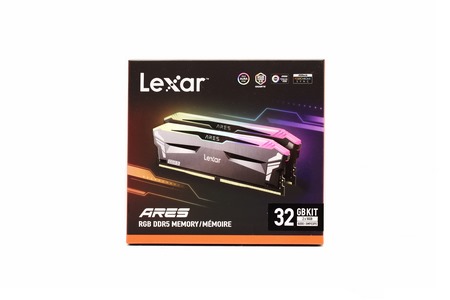INTRODUCTION
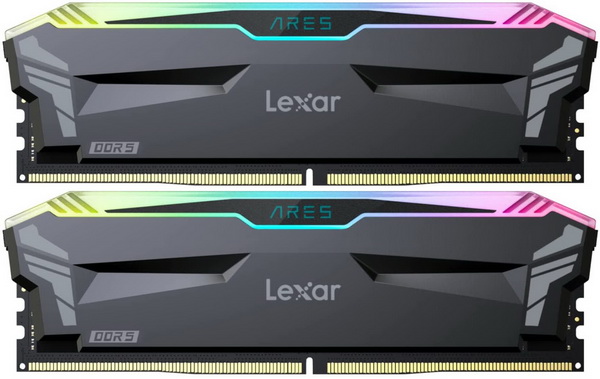
As far back as i can remember Intel based motherboards have always offered higher memory bandwidth compared to AMD ones and the same applies today as well. This is why even though there are currently some 8GHz DDR5 kits in the market the "sweet spot" when it comes to AMD based motherboards (like the X670/E and B650/E) is set between 6-6.4GHz. For most consumers however such things don't matter much and so although moving from 6-6.4GHz to 8GHz does improve overall system performance it's not nearly enough to justify the extra cost. Lexar recently released their ARES RGB 32GB DDR5 6000MHz CL36 Dual-Channel Kit and finally i found the time to test it out.
For more than 25 years, Lexar has been a trusted leading global brand of memory solutions. Our award-winning lineup includes memory cards, USB flash drives, card readers, solid-state drives and DRAM. With so many options, it’s easy to find the right Lexar solution to fit your needs. All Lexar product designs undergo extensive testing in the Lexar Quality Labs with more than 1,100 digital devices, to ensure performance, quality, compatibility, and reliability. Lexar products are available worldwide at major retail and e-tail stores. For more information or support, visit www.lexar.com.
So far, the Lexar ARES RGB DDR5 line includes two 32GB dual-channel kits (both available in dark gray color), one at 5600MHz with CL30/CL32 (EXPO/XMP) and 1.2V and the 6000MHz with CL34/CL36 and 1.35V (Lexar is sure to introduce more models in the near future). So, the ARES RGB 32GB DDR5 6000MHz CL36 Dual-Channel Kit which i have here obviously supports both XMP 3.0/EXPO profiles and features thick aluminum heatspreaders inside which Lexar has placed single die modules by SK Hynix (with On-die ECC), built-in Power Management IC (PMIC) and a total of 16 RGB LEDs all of which can be controlled by Lexar's RGB Sync software (also compatible with all the leading RGB motherboard sync technologies like ASUS Aura Sync, GB RGB Fusion 2.0, MSI Mystic Light Sync and ASRock Polychrome). Finally, as with most of their other RAM lines Lexar covers the new ARES RGB DDR5 line with a limited lifetime warranty.
SPECIFICATIONS AND FEATURES

THE LEXAR ARES 32GB DDR5 6000MHZ CL36
Lexar uses a black and red box to ship the ARES RGB DDR5 inside which as expected has their logo at the front along with a product picture, supported RGB technologies, capacity and speed.
A few words about the kit are printed at the rear in 2 languages.
Just the kit is placed inside the box and I have to admit that the dark gray heatspreaders look very nice.
Typically, at the rear we find a small sticker onto which Lexar has placed information on the kit (strangely enough only the EXPO CAS latency of 34 is printed here).
Right under the plastic bar at the top Lexar has placed 16 RGB LEDs which can be configured either through their RGB Sync software or via one of the leasing RGB sync technologies (ASUS Aura Sync, GB RGB Fusion 2.0, MSI Mystic Light Sync and ASRock Polychrome).
Measuring 43.3mm in height the ARES RGB DDR5 is a rather tall module and to showcase this I placed it right next to the Trinity RGB and JetBlack by Neo Forza, FURY Renegade RGB by Kingston, Ripjaws S5 by G.Skill and the 5600MHz DDR5 by Crucial.
Aside the heatspreaders the ARGB also look very nice (still it seems that there’s a slight sync delay between modules, at least on my test rig).
TEST BED


TESTING METHODOLOGY
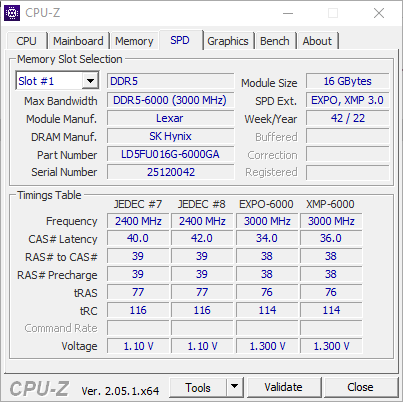
Thanks to XMP 3.0 and EXPO profiles the only thing one needs to do in order to run a brand new RAM kit at its advertised frequency, timings and voltages is to choose/enable it from within the BIOS and reboot. That being said if you're into overclocking you may not wish to use the main XMP/EXPO profile but instead to choose your very own frequency, timings and voltages to achieve even higher performance numbers and that's exactly what we'll also be doing during our DDR5 tests. To be more specific aside testing each kit with its XMP profile I'll also be upping the voltages (up to 1.4V for 1.35V kits – even though most kits can function at higher voltages I don’t recommend doing so - RAM modules that use 1.4V/1.45V/1.5V will be tested up to 1.45V/1.5V/1.55V respectively) and frequencies (200MHZ increments) until i find the maximum achievable stable frequency (those results will be entered into the OC charts). I also thought about upping voltages and reducing timings instead of increasing the frequency of the modules as high as it can go (always stable and without using 0.5-1V over stock) but the end results are pretty much identical.
As for the how I'll be testing each DDR5 Dual-Kit to arrive in the lab well there aren't that many benchmark programs that only test RAM (or at least RAM and CPU without anything else coming into play) but I’ve got most of them and so you will be seeing results from following benchmarking programs, AIDA64 Engineer Edition, Cinebench Release 23, MaxMemm2, Passmark Performance Test v10.1, Sisoftware Sandra Titanium and WPrime v2.11. All tests are performed on a fresh Windows 10 Pro x64 installation (complete with all updates until the day of this review) and are repeated a total of 6 times after which the average numbers get recorded into the charts.
* Since you all decided for me to use the Intel Core I9-13900K for graphics cards tests I’ll also be using that for DDR5 tests (5.8GHz P-Cores / 4.7GHz E-Cores / RING 4.9GHz) and in order to showcase potential gains between stock and overclocked clocks/frequencies I’ll also be using Forza Horizon 5 (1080p/Extreme Graphics). Still do keep in mind that i can't dedicate a high-end GPU solely for DDR5 reviews so each time i review such a kit I’ll be using a different chart (the card used will be listed above).
TEST RESULTS - XMP 3.0 PROFILE







TEST RESULTS – OVERCLOCK
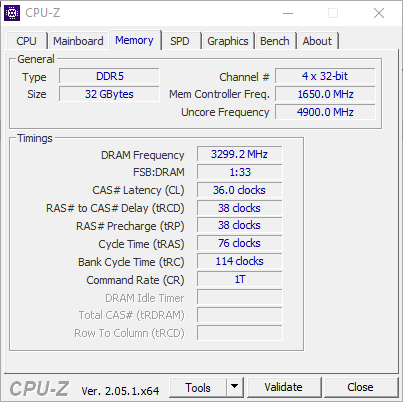






TEST RESULTS – FORZA HORIZON 5

CONCLUSION
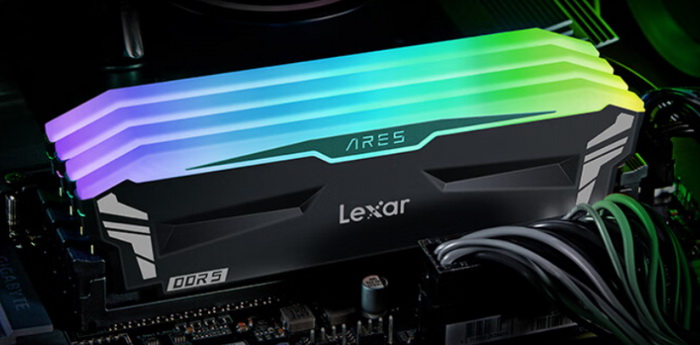
As you may have noticed I used the CAS latency of the XMP 3.0 profile in the title mainly because of 2 reasons. Obviously because my test rig is an Intel based one and also due to the fact that the kit wouldn’t work properly (meaning at EXPO settings) neither on the B650 Aorus Tachyon or the X670 Aorus Elite which I have here. I have been hearing similar issues with XMP 3.0 and EXPO compatible kits so I do hope those get resolved sooner rather than later. That being said it’s clear from the charts that the ARES RGB DDR5 Dual-Channel Kit may not be the fastest kit so far but it actually does very well overall, including in terms of overclocking headroom (6600MHz @ 1.4V) and of course looks. That being said the lack of available kits (5600MHz & 6000Mhz only) is not ideal but for people who are not looking for the highest possible performance these two are plenty (still Lexar obviously can’t cover a large enough market share with only two DDR5 RGB kits).
Retailing currently for USD149.99 inside the USA (Amazon.com) and for 193.20Euros inside the EU (Amazon.de) the Lexar ARES RGB 32GB DDR5 6000MHz CL34/CL36 Dual-Channel Kit could be priced a bit better on this side of the Atlantic. Price aside however the EXPO issue is something that i can’t ignore. Yes, this kit works well using XMP 3.0 but since obviously one of its selling points is its XMP & EXPO compatibility this deducts quite a few points from its final score. Still, if you’re using an XMP compatible platform (or an EXPO one and this kit is listed in its QVL) and 6GHz is enough for you i do suggest giving it a chance.
PROS
- Build Quality
- Overall Performance
- Good Overclocking Headroom
- RGB Lighting
- Limited Lifetime Warranty
- XMP 3.0 & EXPO Compatible
CONS
- EXPO Issues (Compatibility)
- Available Kits Currently (Just Two)
- Price (EU)

 O-Sense
O-Sense





